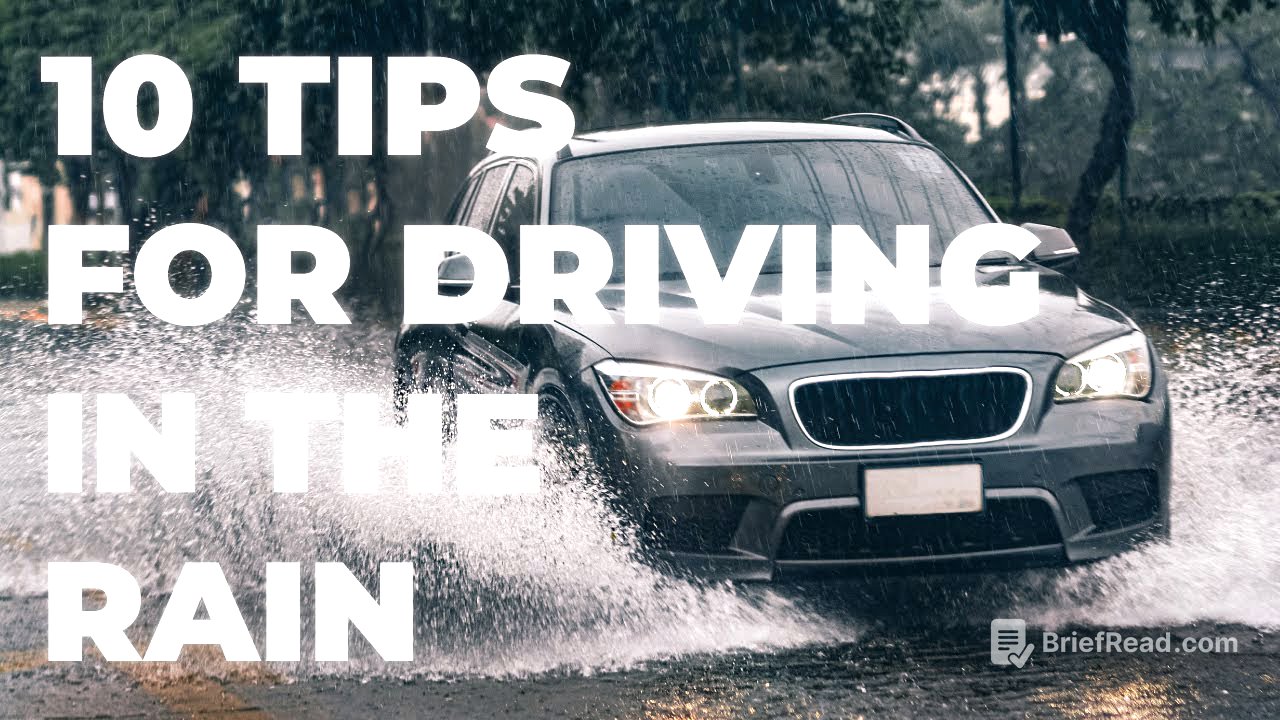TLDR;
This video from the San Jose Fire Department provides ten essential tips for driving safely in wet weather conditions. It emphasizes the increased risk of accidents due to slippery roads and reduced visibility. The advice covers vehicle maintenance, route planning, adjusting driving habits, and how to respond to hydroplaning, all aimed at helping motorists navigate rainy conditions safely.
- Ensure vehicle is in good working order.
- Adjust driving habits for wet conditions.
- Know how to handle hydroplaning.
Intro [0:00]
Firefighter Paramedic Travis Markowski from the San Jose Fire Department introduces the topic of safe driving in rainy conditions. He notes that rain and wet weather lead to over 860,000 car accidents annually. The video aims to provide drivers with ten steps to mitigate risks associated with driving on wet roads.
Tip 1: Vehicle Maintenance [0:22]
Before driving in the rain, it's crucial to ensure your vehicle is in proper working order. This includes inspecting windshield wipers, headlights, turn signals, tail lights, and tire treads. Proper maintenance ensures optimal visibility and traction, which are essential for safe driving in wet conditions.
Tip 2: Plan Your Route [0:36]
Planning your route before driving is important. Check local road conditions for closures and traffic updates. Consider leaving earlier to avoid rushing, which can lead to mistakes.
Tip 3: Turn on Your Headlights [0:46]
Headlights increase visibility in bad weather and are legally required in California when windshield wipers are in use. Using headlights improves your ability to see and be seen by other drivers.
Tip 4: Leave Extra Room [1:01]
Wet roads increase braking distance, so it's important to increase the following distance between vehicles. In heavy rain, consider doubling the typical following distance to allow for adequate reaction time.
Tip 5: Slow Down [1:14]
Reaction time is slower on wet surfaces, so reduce speed by one-third in wet conditions. Fresh rainfall can create slippery conditions by bringing oil and grease to the surface.
Tip 6: Avoid Sudden Movements [1:32]
Gentle steering, braking, and acceleration are best on wet roads. Sudden movements can cause a loss of control.
Tip 7: Never Use Cruise Control [1:39]
Cruise control can interfere with the vehicle's ability to slow down during hydroplaning, which is when the vehicle slides uncontrollably on a wet surface. Disabling cruise control allows for better control in such situations.
Tip 8: Exercise Caution Around Standing Water [1:52]
Driving through standing water can cause hydroplaning, and fast-moving water can sweep a car off the road. It's best to turn around and find an alternate route if encountering significant standing or flowing water.
Tip 9: Handling Hydroplaning [2:07]
If hydroplaning occurs, stay calm, avoid slamming on the brakes, gently ease off the gas, and steer in the direction the car is headed until traction is regained. If the car has anti-lock brakes, braking normally is acceptable.
Tip 10: Pull Over If Necessary [2:23]
If visibility is severely limited or the vehicle is difficult to control, pull over and wait for the weather to improve. Safety is paramount, and sometimes waiting is the best course of action.
Conclusion [2:32]
The video concludes by reminding viewers to be extra vigilant and employ the safety precautions discussed during the rainy season to avoid accidents. The San Jose Fire Department encourages everyone to stay safe.









